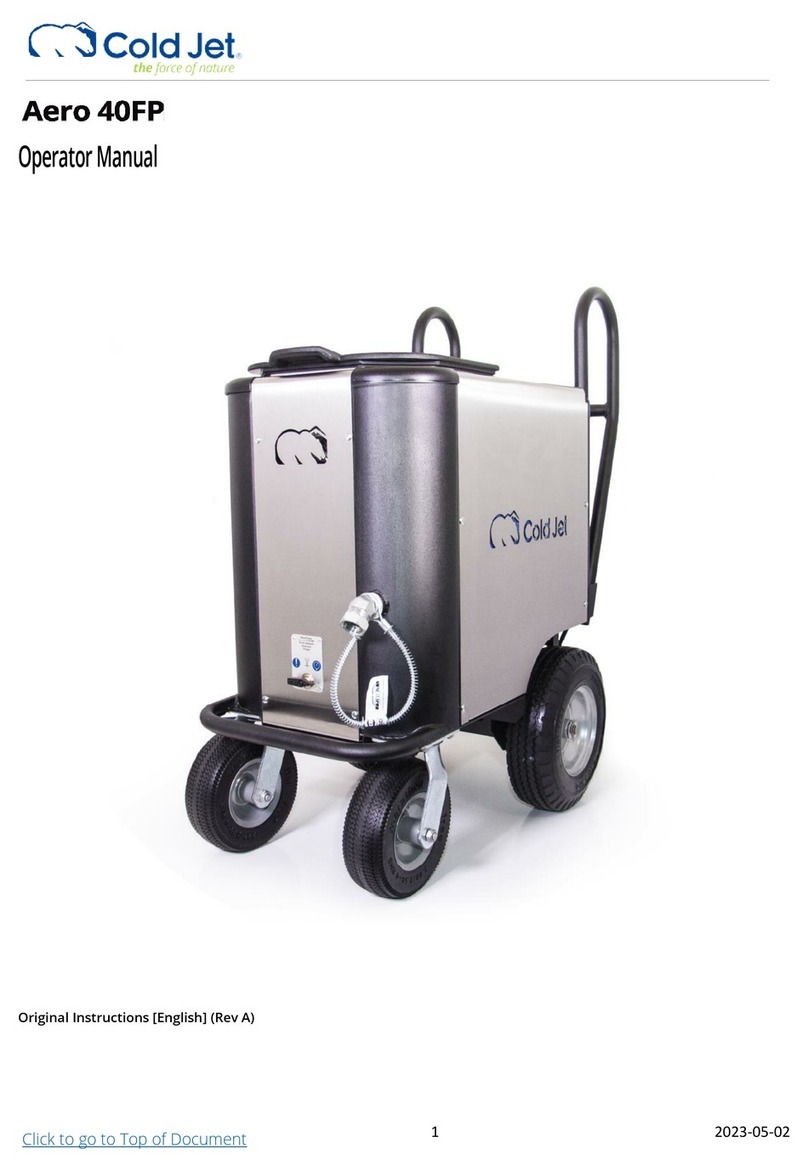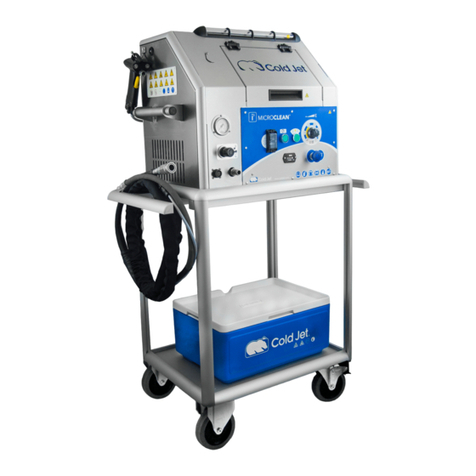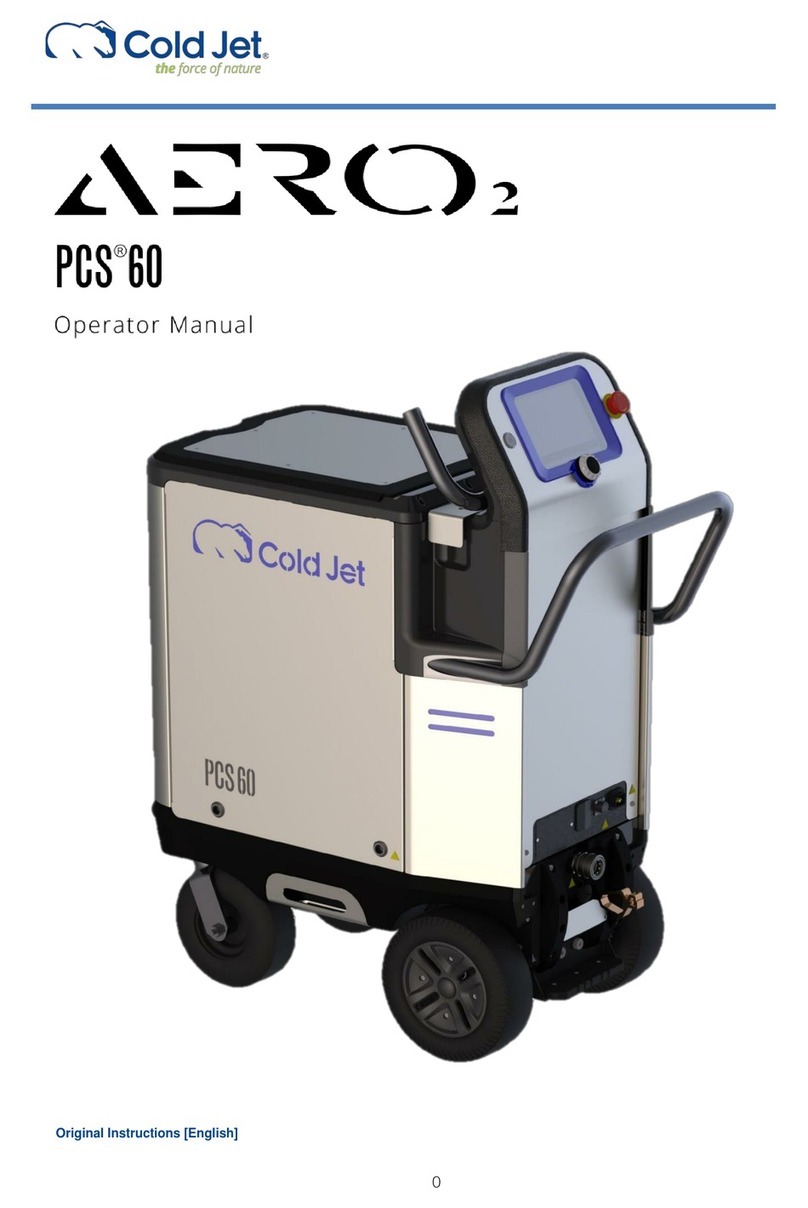
2
OM.A40FP.20150701
The Aero 40FP is safe and easy to operate; however, certain precautions must be followed during its use. To
understand all the necessary precautions, you must read the entire Aero 40FP manual before operating the
unit.
The Aero 40FP should only be operated by authorized and trained personnel.
IN THIS SECTION
General Safety Requirements. . . . . . . . . . . . . . . . . . . . . . . . . . 2
Electrostatic Discharge. . . . . . . . . . . . . . . . . . . . . . . . . . . . . . 3
CO2Safety . . . . . . . . . . . . . . . . . . . . . . . . . . . . . . . . . . . . . . 4
GENERAL SAFETY REQUIREMENTS
x Always follow the guidelines of the governing codes of your local/national body as a minimum
standard for ensuring safety.
x Always wear thermal gloves, eye and ear protection (safety glasses and ear plugs).
x Never expose bare skin to CO2ice.
x Never point the nozzle at self or anyone else and always exercise extreme caution when people are in
the blast area.
x Never use a wire tie to hold the applicator trigger in the on position. This will cause damage that will
void the warranty.
x Never use the blasting unit or hoses for anything other than the intended use.
x 1HYHURSHUDWHLQDFRQȴQHGVSDFHZLWKRXWDQDSSURYHGYHQWLODWLRQV\VWHP
x Never operate the unit with guards removed.
x Never mask the machine’s ventilation holes.
x Never operate a damaged blasting unit.
x Never exceed recommended hose or blasting unit pressure levels.
x Do not kink the blast hose before, during or after operation.
x 1HYHUGLVFRQQHFWWKHDLUVXSSO\KRVHZLWKRXWȴUVWVKXWWLQJRWKHVRXUFHDLUDQGUHPRYLQJWKHOLQH
pressure.
x 2QO\&ROG-HWWUDLQHGVHUYLFHWHFKQLFLDQVDUHFHUWLȴHGWRZRUNRQHOHFWULFDOFRPSRQHQWV
SAFETY GUIDELINES































